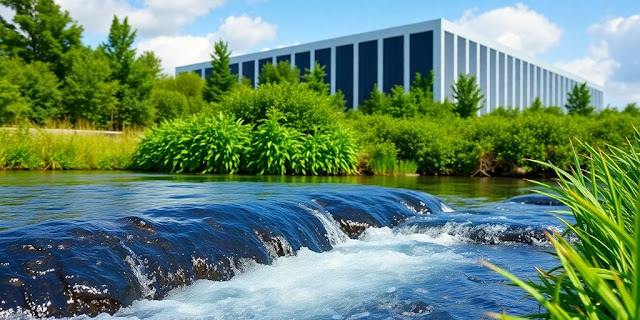Concerns are mounting in the UK regarding the potential for water shortages as the government pushes forward with plans to establish multiple AI data centres. These facilities, essential for powering artificial intelligence, require significant amounts of water for cooling, raising alarms about the sustainability of local water supplies.
Key Takeaways
The UK government is committed to expanding AI infrastructure, which may strain water resources.
Data centres can consume millions of litres of water daily to prevent overheating.
Experts warn that current water supplies may not meet future demands, necessitating urgent action.
The Growing Demand for Water
As the UK aims to become a leader in artificial intelligence, the demand for data centres is set to increase. These facilities are crucial for processing vast amounts of data but come with a hefty water requirement.
Water Usage: A typical data centre can use between 11 million and 19 million litres of water per day, equivalent to the daily needs of a town with 30,000 to 50,000 residents.
Cooling Needs: Data centres primarily use water for cooling systems to maintain optimal operating temperatures for their servers.
Sustainability Challenges
The rapid expansion of AI technology is introducing new sustainability challenges, particularly concerning water usage.
Current Water Shortages: Many regions in the UK, especially in the south, are already facing water shortages due to climate change and population growth.
Government Initiatives: The government is backing plans for new reservoirs to mitigate the risk of water rationing, but these projects may conflict with the establishment of new data centres.
Industry Responses
In response to these challenges, the tech industry is exploring innovative cooling solutions that require less water.

Alternative Cooling Methods: Techniques such as liquid cooling and immersion cooling are being developed to reduce water consumption.
Efficiency Improvements: Companies like Microsoft are implementing water-free cooling systems in new data centres, aiming to lessen their environmental impact.
The Role of Water Companies
Water companies are beginning to engage with the government to address the potential impact of data centres on water supply.
Thames Water's Concerns: Thames Water has expressed worries about the increasing demand from data centres and is in discussions with the government to find solutions.
Future Projections: The Environment Agency has indicated that by 2050, England will need an additional five billion litres of water daily to meet population demands.
Conclusion
As the UK forges ahead with its AI ambitions, the balance between technological advancement and environmental sustainability is becoming increasingly precarious. The government, tech companies, and water providers must collaborate to ensure that the thirst for data does not compromise the availability of this vital resource. Without proactive measures, the development of AI could lead to significant environmental repercussions, including water scarcity.


